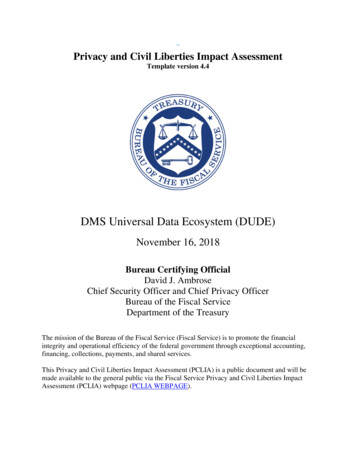
Transcription
“Privacy and Civil Liberties Impact AssessmentTemplate version 4.4DMS Universal Data Ecosystem (DUDE)November 16, 2018Bureau Certifying OfficialDavid J. AmbroseChief Security Officer and Chief Privacy OfficerBureau of the Fiscal ServiceDepartment of the TreasuryThe mission of the Bureau of the Fiscal Service (Fiscal Service) is to promote the financialintegrity and operational efficiency of the federal government through exceptional accounting,financing, collections, payments, and shared services.This Privacy and Civil Liberties Impact Assessment (PCLIA) is a public document and will bemade available to the general public via the Fiscal Service Privacy and Civil Liberties ImpactAssessment (PCLIA) webpage (PCLIA WEBPAGE).
Section 1: IntroductionIt is the policy of the Department of the Treasury (“Treasury” or “Department”) and its Bureausto conduct a Privacy and Civil Liberties Impact Assessment (“PCLIA”) when personallyidentifiable information (“PII”) is maintained in a system or by a project. PCLIAs are requiredfor all systems and projects that collect, maintain, or disseminate PII, regardless of the manner inwhich the information is retrieved.This assessment is being completed pursuant to Section 208 of the E-Government Act of 2002(“E-Gov Act”), 44 U.S.C. § 3501, Office of the Management and Budget (“OMB”)Memorandum 03-22, “OMB Guidance for Implementing the Privacy Provisions of the EGovernment Act of 2002,” and Treasury Directive 25-07, “Privacy and Civil Liberties ImpactAssessment (PCLIA).”Section 2: DefinitionsAgency – means any entity that falls within the definition of the term “executive agency” asdefined in 31 U.S.C. § 102.Certifying Official – The Bureau Privacy and Civil Liberties Officer(s) who certify that allrequirements in TD and TD P 25-07 have been completed so a PCLIA can be reviewed andapproved by the Treasury Deputy Assistant Secretary for Privacy, Transparency, and Records.Collect (including “collection”) – means the retrieval, receipt, gathering, or acquisition of anyPII and its storage or presence in a Treasury system. This term should be given its broadestpossible meaning.Contractors and service providers – are private companies that provide goods or servicesunder a contract with the Department of the Treasury or one of its bureaus. This includes, but isnot limited to, information providers, information processors, and other organizations providinginformation system development, information technology services, and other outsourcedapplications.Data mining – means a program involving pattern-based queries, searches, or other analyses of1 or more electronic databases, where – (a) a department or agency of the federal government,or a non-federal entity acting on behalf of the federal government, is conducting the queries,searches, or other analyses to discover or locate a predictive pattern or anomaly indicative ofterrorist or criminal activity on the part of any individual or individuals; (b) the queries, searches,or other analyses are not subject-based and do not use personal identifiers of a specificindividual, or inputs associated with a specific individual or group of individuals, to retrieveinformation from the database or databases; and (c) the purpose of the queries, searches, or otheranalyses is not solely – (i) the detection of fraud, waste, or abuse in a government agency orprogram; or (ii) the security of a government computer system.1
Disclosure – When it is clear from its usage that the term “disclosure” refers to records providedto the public in response to a request under the Freedom of Information Act (5 U.S.C. § 552,“FOIA”) or the Privacy Act (5 U.S.C. § 552a), its application should be limited in that manner.Otherwise, the term should be interpreted as synonymous with the terms “sharing” and“dissemination” as defined in this manual.Dissemination – as used in this manual, is synonymous with the terms “sharing” and“disclosure” (unless it is clear from the context that the use of the term “disclosure” refers to aFOIA/Privacy Act disclosure).E-Government – means the use of digital technologies to transform government operations toimprove effectiveness, efficiency, and service delivery.Federal information system – means a discrete set of information resources organized for thecollection, processing, maintenance, transmission, and dissemination of information owned orunder the control of a federal agency, whether automated or manual.Final Rule – After the NPRM comment period closes, the agency reviews and analyzes thecomments received (if any). The agency has the option to proceed with the rulemaking asproposed, issue a new or modified proposal, or withdraw the proposal before reaching its finaldecision. The agency can also revise the supporting analyses contained in the NPRM (e.g., toaddress a concern raised by a member of the public in response to the NPRM).Government information – means information created, collected, used, maintained, processed,disseminated, or disposed of by or for the federal government.Individual – means a citizen of the United States or an alien lawfully admitted for permanentresidence. If a question does not specifically inquire about or an issue does not clearly involve aPrivacy Act system of records, the term should be given its common, everyday meaning. Incertain contexts, the term individual may also include citizens of other countries who are coveredby the terms of an international or other agreement that involves information stored in the systemor used by the project.Information – means any representation of knowledge such as facts, data, or opinions in anymedium or form, regardless of its physical form or characteristics. This term should be given thebroadest possible meaning. This term includes, but is not limit to, information contained in aPrivacy Act system of records.Information technology (IT) – means any equipment or interconnected system or subsystem ofequipment, used in the automatic acquisition, storage, analysis, evaluation, manipulation,management, movement, control, display, switching, interchange, transmission, or reception ofdata or information by the executive agency, if the equipment is used by the executive agencydirectly or is used by a contractor under a contract with the executive agency that requires theuse: (i) of that equipment; or (ii) of that equipment to a significant extent in the performance of aservice or the furnishing of a product. It includes computers, ancillary equipment (includingimaging peripherals, input, output, and storage devices necessary for security and surveillance),2
peripheral equipment designed to be controlled by the central processing unit of a computer,software, firmware and similar procedures, services (including support services), and relatedresources; but does not include any equipment acquired by a federal contractor incidental to afederal contract. Clinger-Cohen Act of 1996, 40 U.S.C. § 11101(6).Major Information system – embraces “large” and “sensitive” information systems and means“a system or project that requires special management attention because of its importance to anagency mission; its high development, operating, or maintenance costs; or its significant role inthe administration of agency programs, finances, property, or other resources.” OMB Circular A130, § 6.u. This definition includes all systems that contain PII and are rated as “MODERATEor HIGH impact” under Federal Information Processing Standard 199.National Security systems – a telecommunications or information system operated by thefederal government, the function, operation or use of which involves: (1) intelligence activities,(2) cryptologic activities related to national security, (3) command and control of military forces,(4) equipment that is an integral part of a weapon or weapons systems, or (5) systems critical tothe direct fulfillment of military or intelligence missions, but does not include systems used forroutine administrative and business applications, such as payroll, finance, logistics, andpersonnel management. Clinger-Cohen Act of 1996, 40 U.S.C. § 11103.Notice of Proposed Rule Making (NPRM) – the Privacy Act (Section (J) and (k)) allowagencies to use the rulemaking process to exempt particular systems of records from some of therequirements in the Act. This process is often referred to as “notice-and-comment rulemaking.”The agency publishes an NPRM to notify the public that the agency is proposing a rule andprovides an opportunity for the public to comment on the proposal before the agency can issue afinal rule.Personally Identifiable Information (PII) –any information that can be used to distinguish ortrace an individual’s identity, either alone or when combined with other personal or identifyinginformation that is linked or linkable to a specific individual.Privacy and Civil Liberties Impact Assessment (PCLIA) – a PCLIA is:(1) a process conducted to: (a) identify privacy and civil liberties risks in systems,programs, and other activities that maintain PII; (b) ensure that information systems,programs, and other activities comply with legal, regulatory, and policy requirements;(c) analyze the privacy and civil liberties risks identified; (d) identify remedies,protections, and alternative or additional privacy controls necessary to mitigate thoserisks; and (e) provide notice to the public of privacy and civil liberties protectionpractices.(2) a document that catalogues the outcome of that privacy and civil liberties riskassessment process.Protected Information – as the term is used in this PCLIA, protected information the samedefinition given to that term in TD 25-10, section 4.3
Privacy Act Record – any item, collection, or grouping of information about an individual thatis maintained by an agency, including, but not limited to, the individual’s education, financialtransactions, medical history, and criminal or employment history and that contains theindividual’s name, or the identifying number, symbol, or other identifying particular assigned tothe individual, such as a finger or voice print or a photograph. 5 U.S.C. § 552a (a)(4).Reviewing Official – The Deputy Assistant Secretary for Privacy, Transparency, and Recordswho reviews and approves all PCLIAs as part of her/his duties as a direct report to the TreasurySenior Agency Official for Privacy.Routine Use – with respect to the disclosure of a record outside of Treasury (i.e., externalsharing), the sharing of such record for a purpose which is compatible with the purpose forwhich it was collected 5 U.S.C. § 552a(a)(7).Sharing – any Treasury initiated distribution of information to government employees or agencycontractors or grantees, including intra- or inter-agency transfers or exchanges of Treasuryinformation, regardless of whether it is covered by the Privacy Act. It does not include responsesto requests for agency records under FOIA or the Privacy Act. It is synonymous with the term“dissemination” as used in this assessment. It is also synonymous with the term “disclosure” asused in this assessment unless it is clear from the context in which the term is used that it refersto disclosure to the public in response to a request for agency records under FOIA or the PrivacyAct.System – as the term used in this manual, includes both federal information systems andinformation technology.System Owner – Official responsible for the overall procurement, development, integration,modification, or operation and maintenance of a system.System of Records – a group of any records under the control of Treasury from whichinformation is retrieved by the name of the individual or by some identifying number, symbol, orother identifying particular assigned to the individual. 5 U.S.C. § 552a (a)(5).System of Records Notice – Each agency that maintains a system of records shall publish in theFederal Register upon establishment or revision a notice of the existence and character of thesystem of records, which notice shall include: (A) the name and location of the system; (B) thecategories of individuals on whom records are maintained in the system; (C) the categories ofrecords maintained in the system; (D) each routine use of the records contained in the system,including the categories of users and the purpose of such use; (E) the policies and practices of theagency regarding storage, retrievability, access controls, retention, and disposal of the records;(F) the title and business address of the agency official who is responsible for the system ofrecords; (G) the agency procedures whereby an individual can be notified at her/his request if thesystem of records contains a record pertaining to him; (H) the agency procedures whereby anindividual can be notified at her/his request how she/he can gain access to any record pertainingto him contained in the system of records, and how she/he can contest its content; and (I) thecategories of sources of records in the system. 5 U.S.C. § 552a (e)(4).4
Section 3: System OverviewSection 3.1: System/Project Description and PurposeThe purpose of the DUDE is to support business intelligence, reporting and advanced analyticspractices with debt related data on a robust and secure data management data warehouseplatform. This ensures our source transactional systems are not negatively impacted from theseactivities taking place during business hours and with Federal Agency customers actively usingour systems.PII is used to support analysis, derived insights that support business decisions to achieve ourmission objectives in the Debt Management space.It supports the mission of the Bureau by improving the collection of delinquent debts and currentreceivables.Estimated Number of Individuals Whose Personally Identifiable Information isMaintained in the System or by the Project 0 – 999 1000 – 9,999 10,000 – 99,999 100,000 – 499,999 500,000 – 999,999 1,000,000 – 9,999,999 10,000,000 – 99,999,999 100,000,000 – 999,999,999 1,000,000,000 Section 3.2: Authority to CollectThe authorities for operating this system or performing this project are: Debt CollectionImprovement Act of 1996, 31 U.S.C. § 3701; etalSection 4: Information CollectionSection 4.1: Relevant and NecessarySection 4.1(a) Please check all of the following that are true:1. None of the PII maintained in the system or by the project is part of a Privacy Actsystem of records;2. All of the PII maintained in the system or by the project is part of a system of recordsand none of it is exempt from the Privacy Act relevant and necessary requirement;3. All of the PII maintained in the system or by the project is part of a system of recordsand all of it is exempt from the Privacy Act relevant and necessary requirement;4. Some, but not all, of the PII maintained in the system or by the project is part of asystem of records and the records to which the Privacy Act applies are exempt from therelevant and necessary requirement; and5
5. Some, but not all, of the PII maintained in the system or by the project is part of asystem of records and none of the records to which the Privacy Act applies are exemptfrom the relevant and necessary requirement.Section 4.1(b) Yes No N/A With respect to PII maintained in the system or by theproject that is subject to the Privacy Act’s relevant and necessary requirement, was anassessment conducted prior to collection (e.g., during Paperwork Reduction Act analysis) todetermine which PII types (see Section 4.2 below) were relevant and necessary to meet thesystem’s or project’s mission requirements?Section 4.1(c) Yes No N/A With respect to PII currently maintained in the system orby the project that is subject to the Privacy Act’s relevant and necessary requirement, is the PIIlimited to only that which is relevant and necessary to meet the system’s or project’s missionrequirements?Section 4.1(d) Yes No N/A With respect to PII maintained in the system or by theproject that is subject to the Privacy Act’s relevant and necessary requirement, is there aprocess to continuously reevaluate and ensure that the PII remains relevant and necessary?Section 4.2: PII and/or information types or groupingsTo perform their missions, federal agencies must necessarily collect various types ofinformation. The checked boxes below represent the types of information maintained in thesystem or by the project. Information identified below is used by the system or project to fulfillthe purpose stated in Section 3.2 – Authority to Collect.Biographical/General Information Name Date of Birth Home Physical/PostalMailing Address Zip Code Business Physical/PostalMailing Address Personal e-mail address Business e-mail address Personal FinancialInformation (including loaninformation) Business FinancialInformation (including loaninformation) Marital Status Personal Cell Number Business Cell Number Group/Organization Membership Military Service Information Personal Home Phone or FaxNumber Alias (including nickname) Business Phone or Fax Number Nationality Country of Birth City or County of Birth Mother’s Maiden Name Spouse Information Children Information Immigration Status Information about otherrelatives. Citizenship Professional/personal referencesor other information about anindividual’s friends, associates oracquaintances. Gender Race Ethnicity6
Religion/ReligiousPreference Sexual Orientation Cell tower records (e.g., logs.user location, time etc.) Contact lists and directories(known to contain personalinformation) Education Information Other (please describe): Device settings or preferences(e.g., security level, sharingoptions, ringtones). User names, avatars, etc. Global Positioning System(GPS)/Location Data Network communications data Secure Digital (SD) Card orOther Data stored on a card or othertechnology Cubical or office number Contact lists and directories(not known to contain personalinformation, but uncertain) Resume or curriculum vitae Other (please describe): Contact lists and directories(known to contain only businessinformation) Other (please describe): Other (please describe):Identifying Numbers Full Social Security number Truncated/Partial Social Security number (e.g.,last 4 digits) Personal Taxpayer Identification Number Health Plan Beneficiary Number Alien Registration Number Business Taxpayer Identification Number (Ifknown: sole proprietor; non-sole proprietor) Business Credit Card Number (If known: soleproprietor; non-sole proprietor) Business Vehicle Identification Number (Ifknown: sole proprietor; non-sole proprietor) Business License Plate Number (If known: sole proprietor; non-sole proprietor) File/Case ID Number (business) (If known: sole proprietor; non-sole proprietor) Business Professional License Number (Ifknown: sole proprietor; non-sole proprietor) Patient ID Number Personal Bank Account Number Government obtained internetnavigation/purchasing habits of individuals Driver’s License Number Personal Credit Card Number Personal Vehicle Identification Number Personal License Plate Number File/Case ID Number (individual) Personal Professional License Number Employee Identification Number Business Bank Account Number Commercially obtained internetnavigation/purchasing habits of individuals Business License Plate Number (non-soleproprietor) Personal device identifiers or serial numbers Other Identifying Numbers (pleasedescribe): Other Identifying Numbers (pleasedescribe): Passport Number and Passport information(including full name, passport number, DOB, POB,sex, nationality, issuing country photograph andsignature) (use “Other” if some but not all elementsare collected)Medical/Emergency Information Regarding Individuals Medical/Health Information Worker’s Compensation ActInformation7 Patient ID Number
Mental Health Information Disability Information Emergency Contact Information(e.g., a third p
software, firmware and similar procedures, services (including support services), and related resources; but does not include any equipment acquired by a federal contractor incidental to a federal contract. Clinger-Cohen Act of 1996, 40 U.S.C. § 11101(6). . The purpose of the DUDE is to
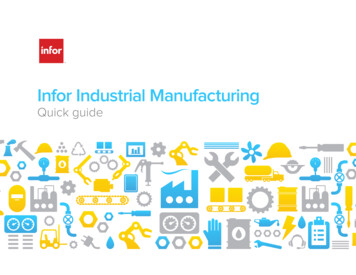
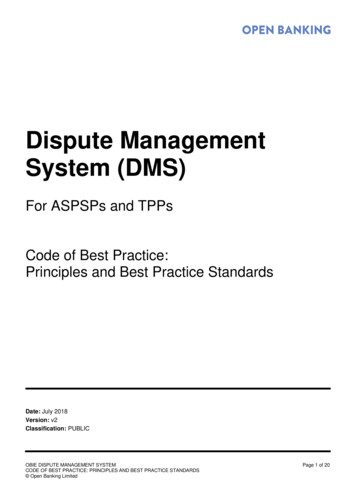
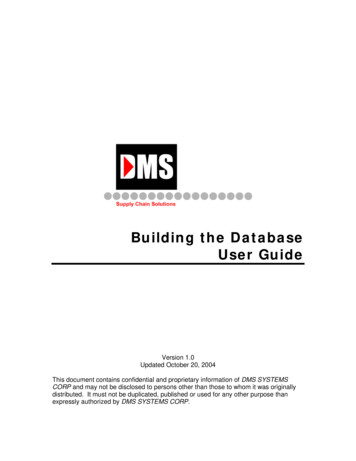

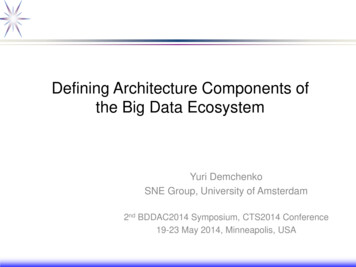

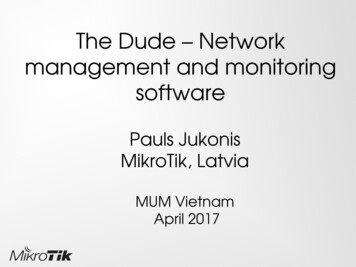
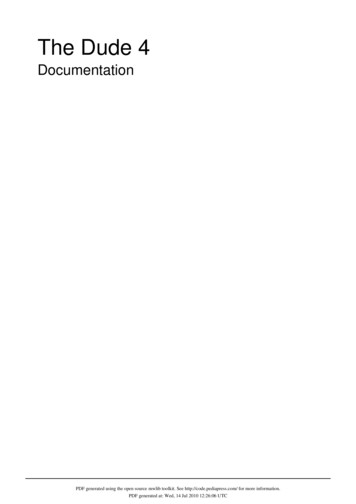
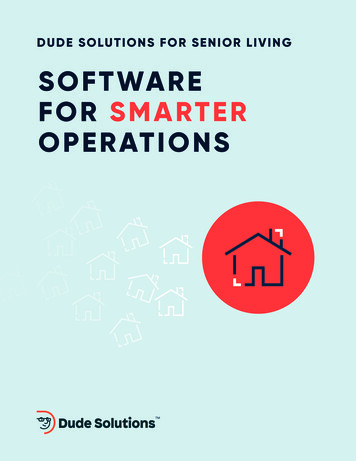
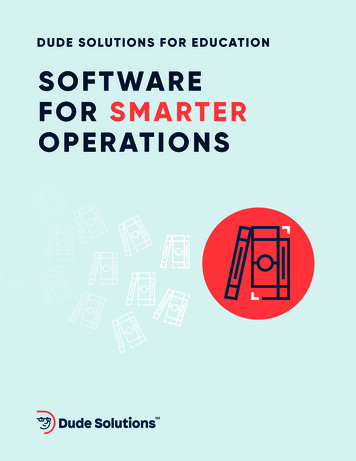
![[Concurso]Configuracion de The DUDE como Network](/img/10/concursoconfiguracion-de-the-dude-como-network-managment-system-comunidad-ryohnosuke-com.jpg)
